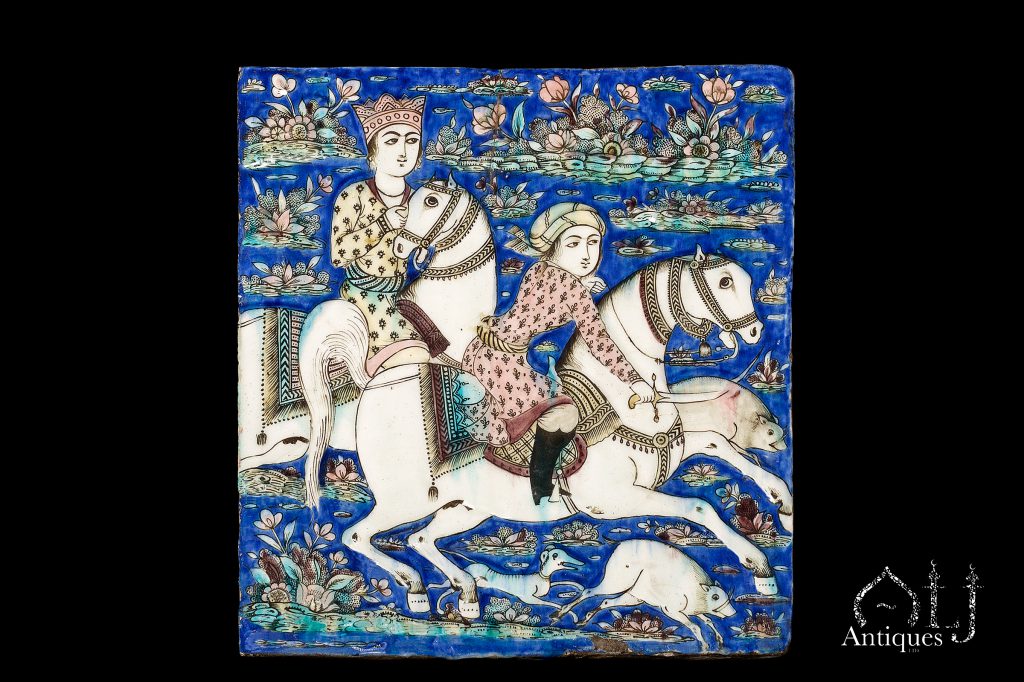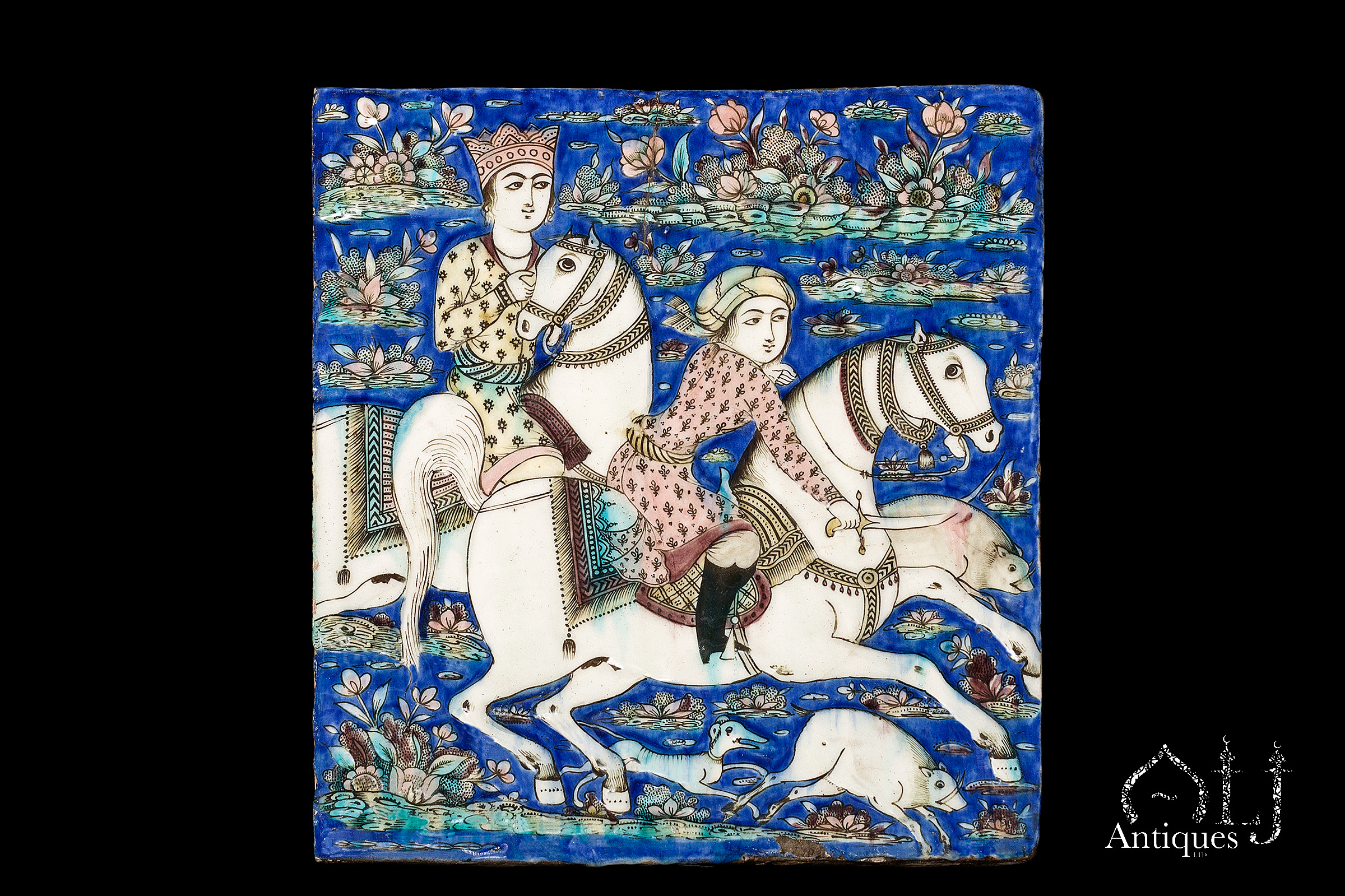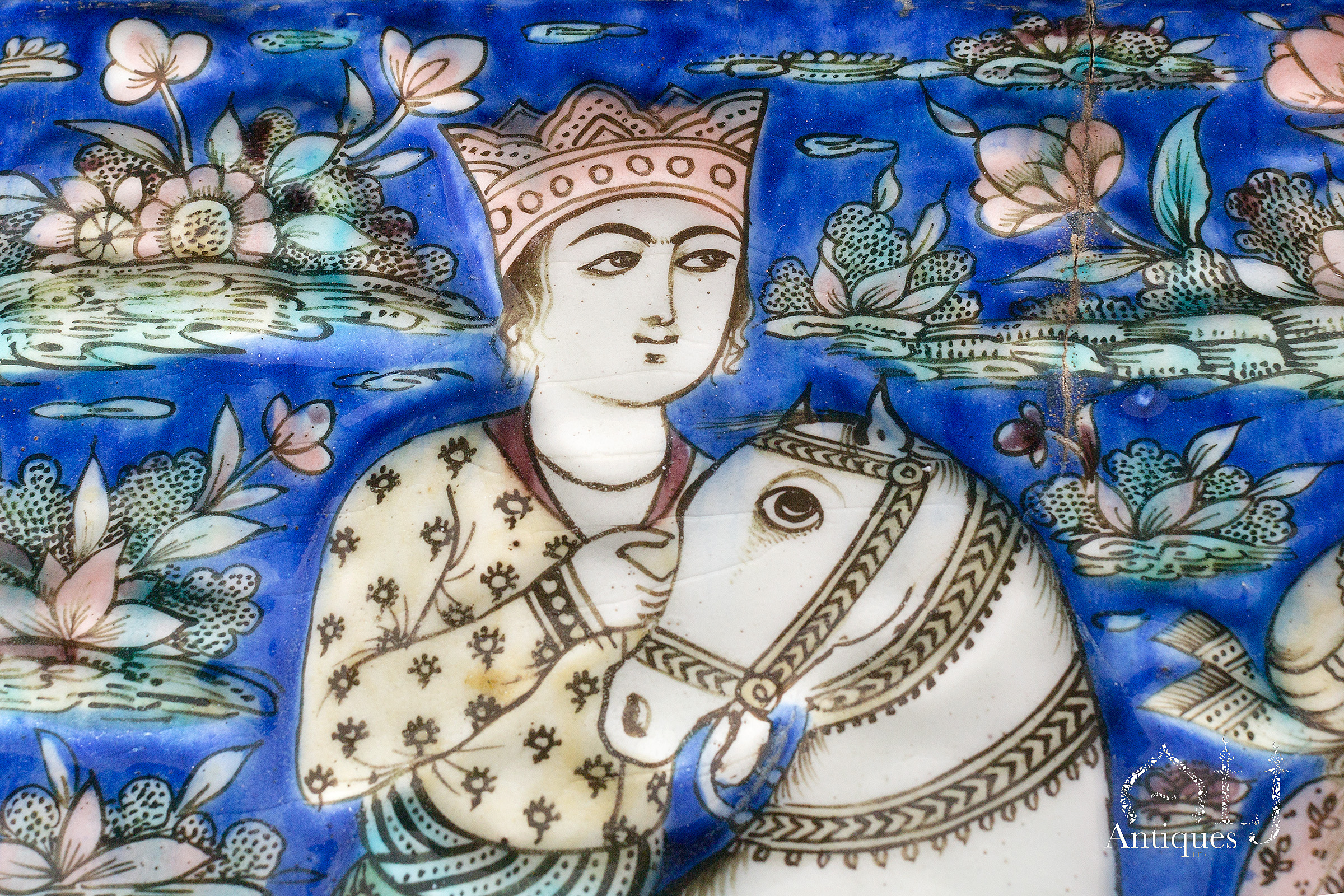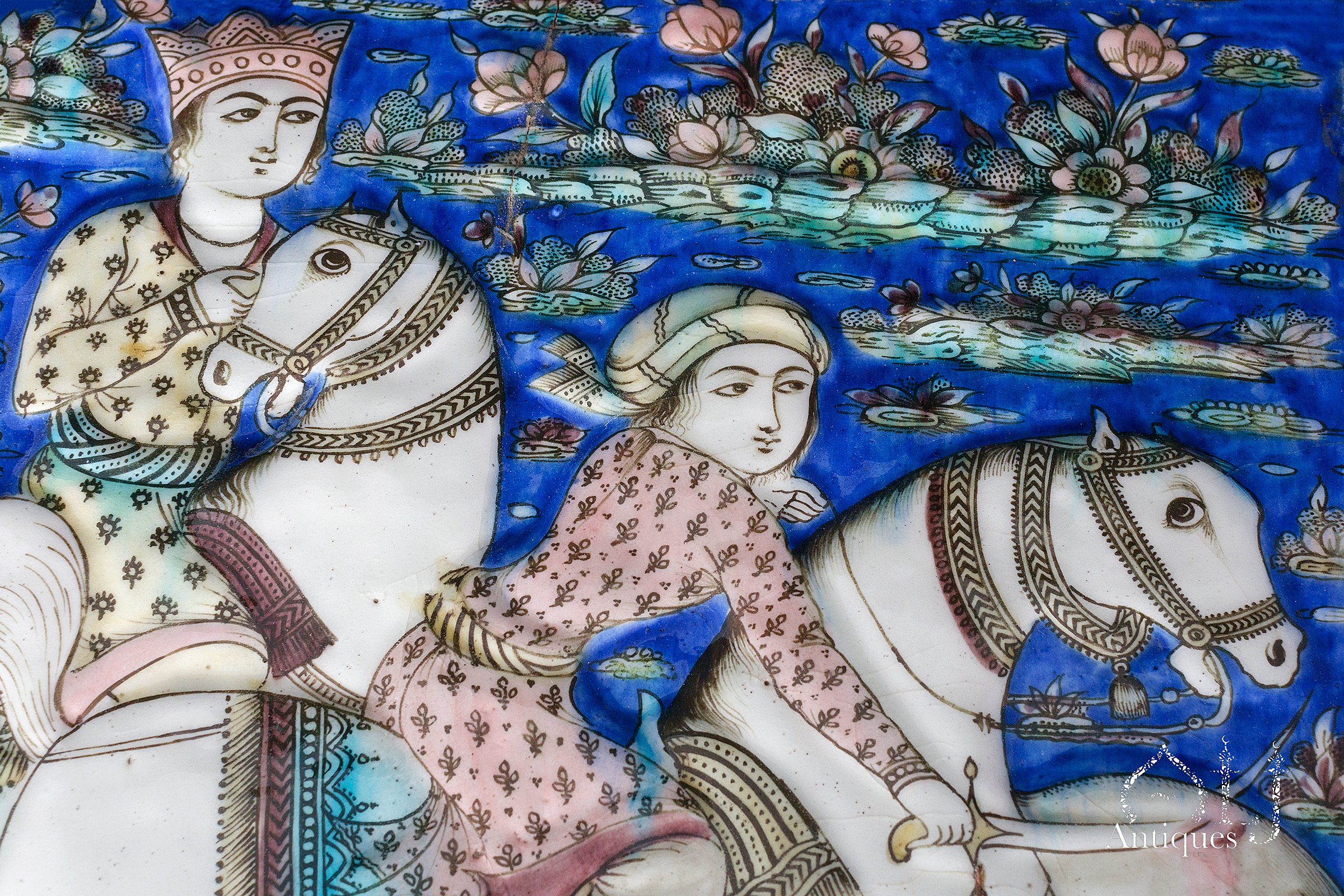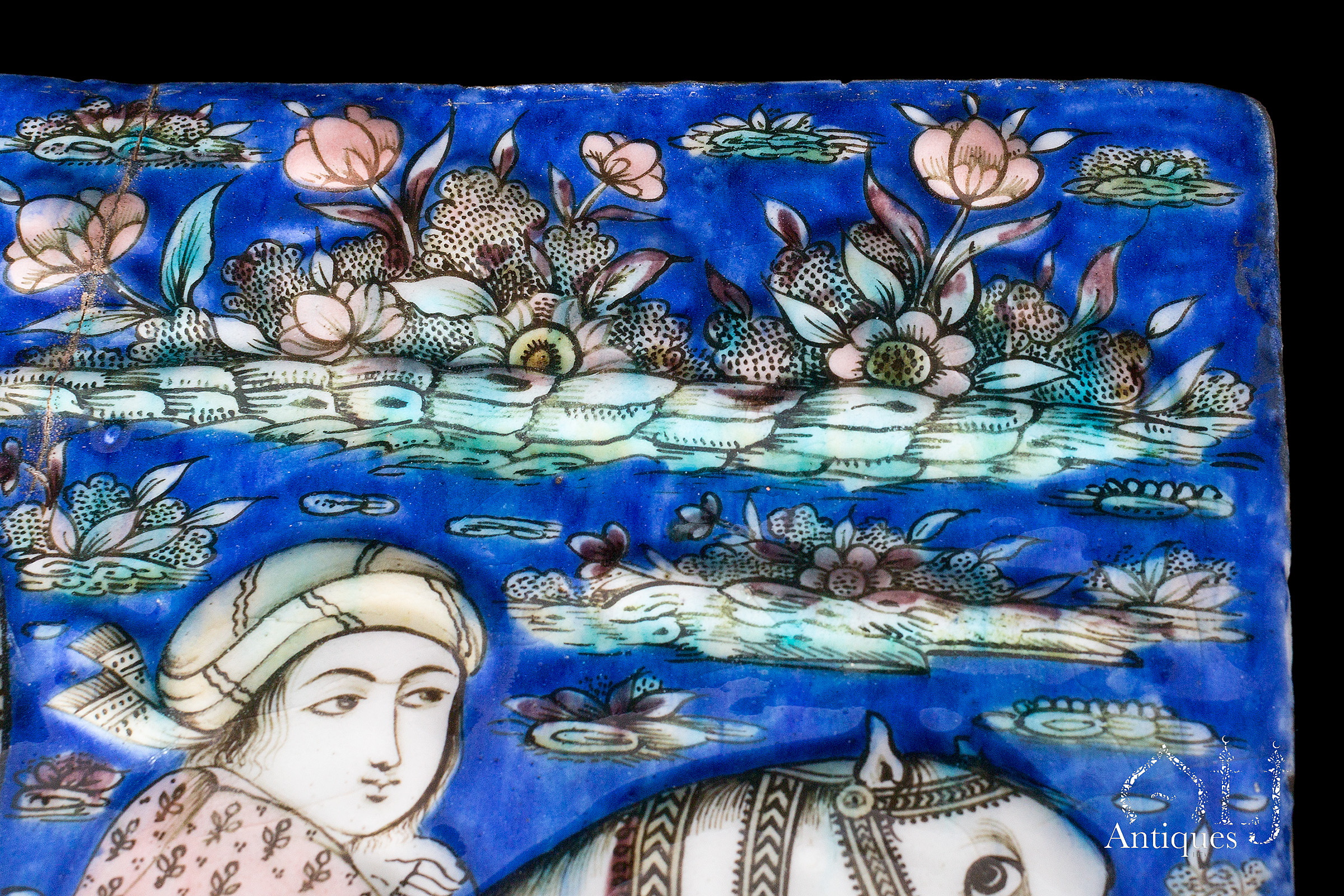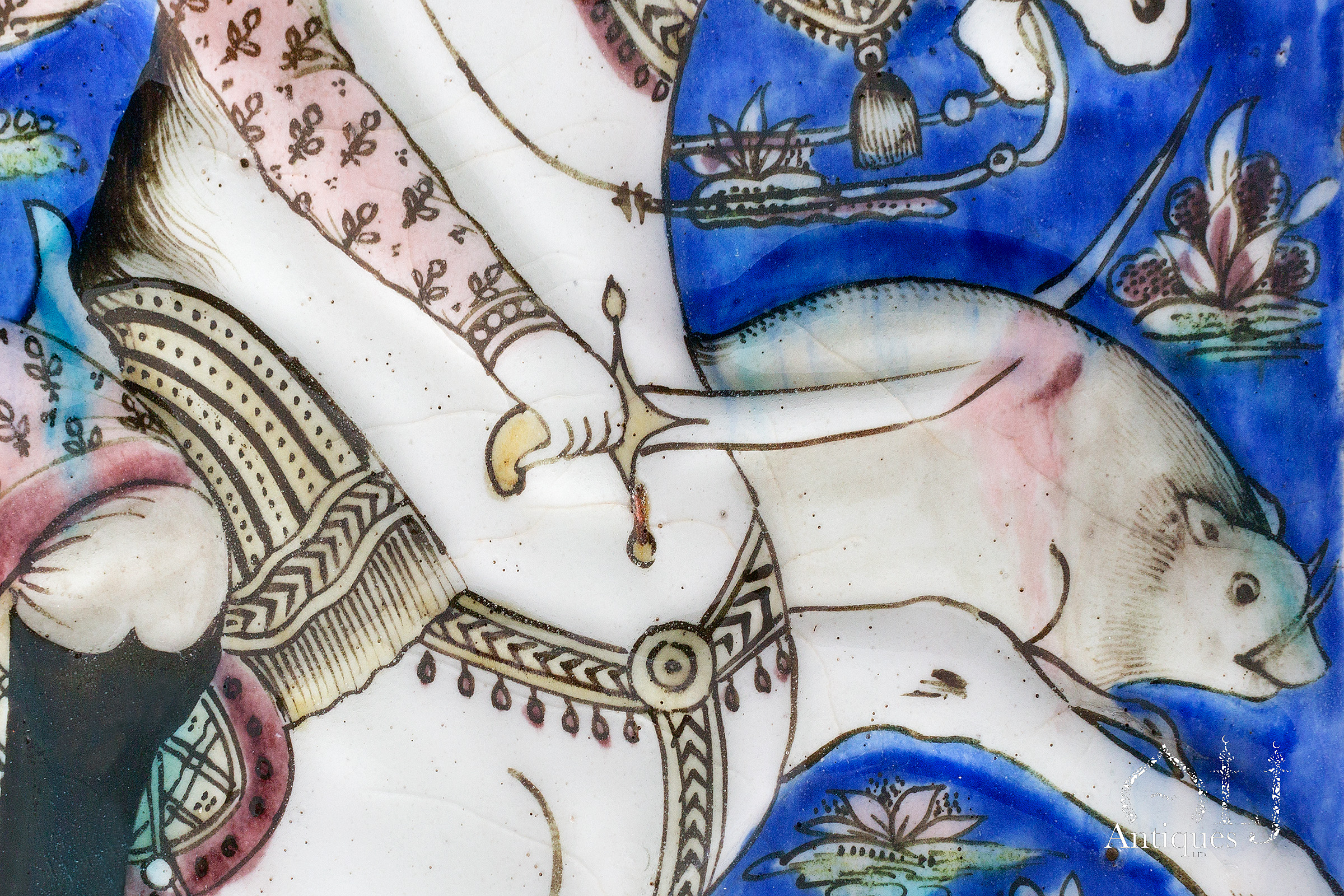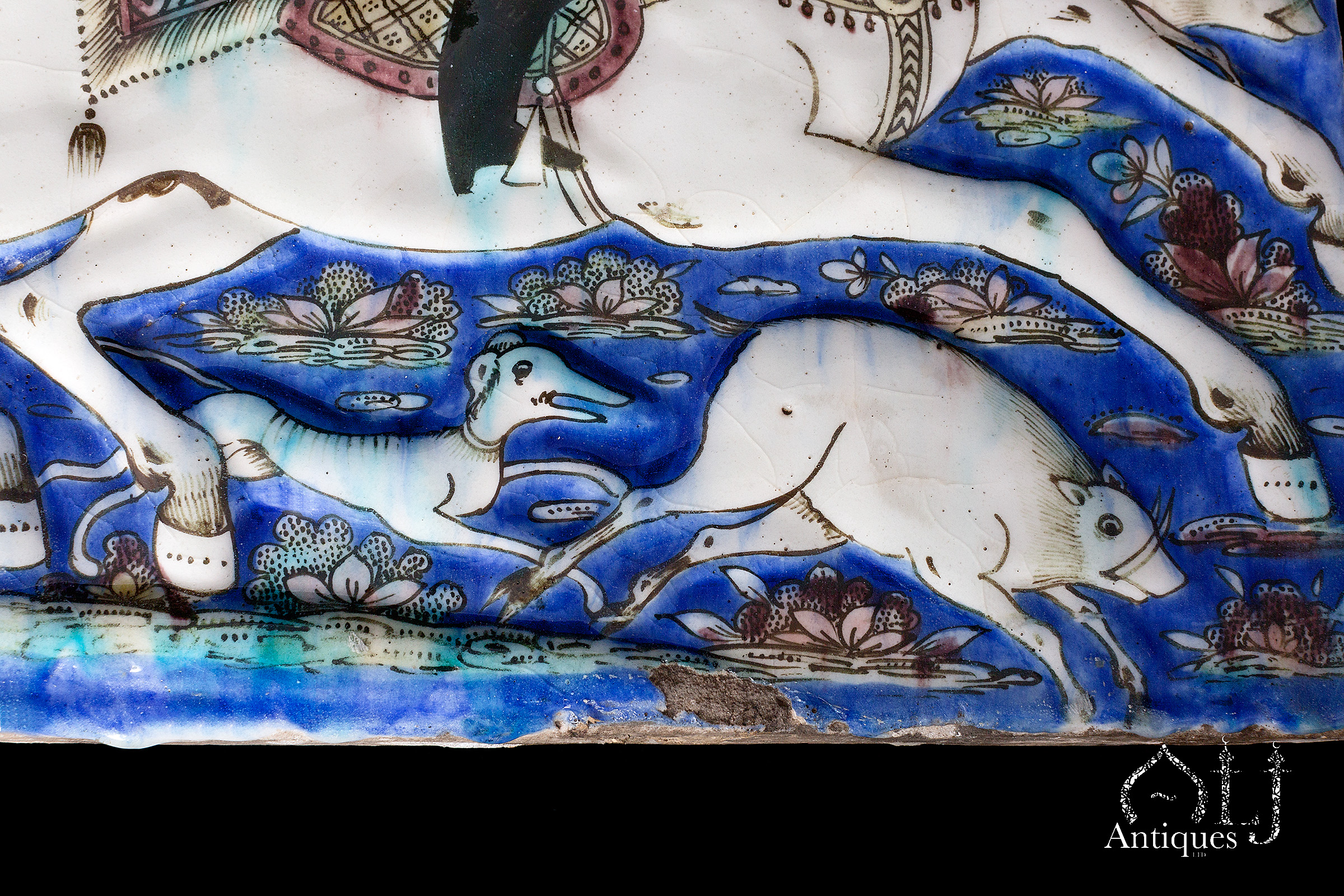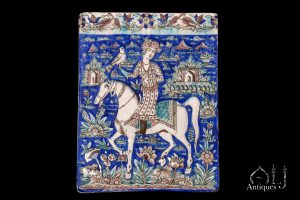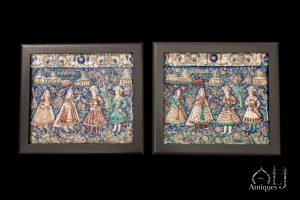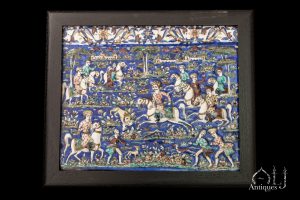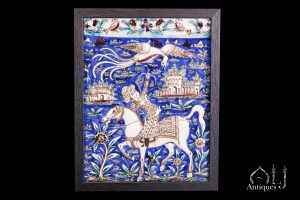Description
This very high quality underglaze polychromed painted moulded tile depicting Royal young men on the back of horses on A hunting spree is probably had been commissioned and produced in Tehran to be used at one of the Royal palaces in the Qajar Dynasty Capital in Tehran, such as the Golestan Palace where similar moulded tiles with hunting scene can be found.
The very high standards and techniques used in the making of these magnificent tiles which are considered to be at the peak of the fine tiles production during the Qajar dynasty reign, where masters of Isfahani origin were employed in the construction and decoration of the Qajar buildings, monuments and palaces, such as the Golestan Palace in Tehran.
This particular tile is beautifully decorated with very vibrant fixed colours in cobalt blue, turquoise, green, pink, manganese purple, brown and black on glazed white fritware depicting large figures of a crowned youth prince accompanied by probably another young Royal male figure on horsebacks hunting wild boars with a dog in a stylised landscape full of vegetation and blooming floral designs.
Dimensions
42 cm * 40.5 cm.
The thickness of the tile is 4 cm.
Condition
Very Good, kiln firing crack and few small kiln fitting areas chips
Provence
Sold on Friday 3rd. April 2020, at Roseberys Auction House, London, Islamic Art & Manuscripts sold Lot identification No. 248. Previously the tile was sold on the 11th. of October 2006 at Sotheby’s Auction House in London, Sold Lot identification No. 131.
References
For similar decorated Tehran & Isfahan tiles please see the following:
Revealing the Unseen, New Perspectives on Qajar Art, edited by Gwenaelle Fellinger with Melanie Gibson, Gingko Library Art Series, The Louver Edition, ISBN: Musee du Louvre 978-2-35031-727-4, First published in 2021.
For other similar examples please see
L’ empire des Roses (The Empire of Roses), Chefs-d’oeuvre de l’art Persan Du XIX E Siècle (Masterpieces of Persian Art of the 19th Century), Musee Du Louvre –Lens, 2018, ISBN: 978-2-36838-048-2.
Please see the various related Tehran produced moulded tiles, lots identification Nos. 292-299, catalogued on pages 305-309.
For other related 19th. Century Tehran moulded tiles produced during the Qajar Dynasty please see. Persia Art Collecting the Arts of Iran for the V&A. BY Moya Carey, the V&A Publishing, ISBN: 978 1 85177 933 8, First Published by the Victoria & Albert Museum in London in 2017.
For various Qajar Dynasty moulded tiles produced in Isfahan or Tehran please see lots 153 & 154 illustrated on pages 162 & 163.
For a very similar large tile decorated with two Royal youth on horseback on a hunting scene also hunting boars from the same period please see the tile belonging to the Art Gallery of South Australia.
For other similar Tehran Moulded tiles at the Royal Golestan Palace In Tehran, please see, Persian Painted Tiles, by Hadi Saif, Catalogue Nos. 145-149.
For other similar Tehran Moulded tiles, Please see, Beyond The Palace Walls, Islamic Art From The State Hermitage Museum, Islamic Art in A World Context, EDITED BY Mikhail B. Piotrrovsky and Anton D. Pritula, National Museums Of Scotland, lot 164, pages, 167-168.

